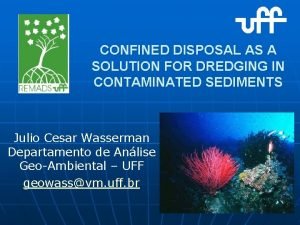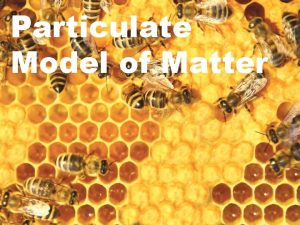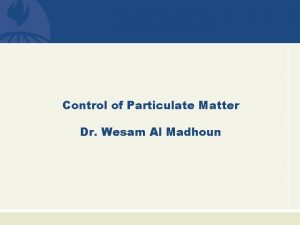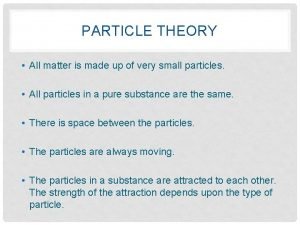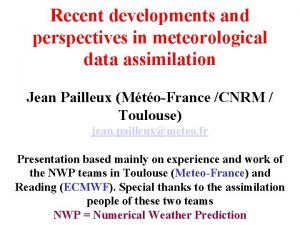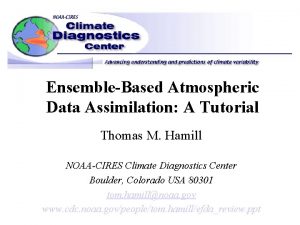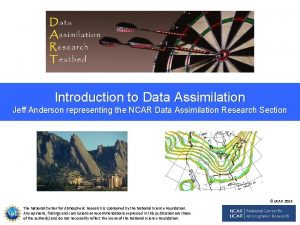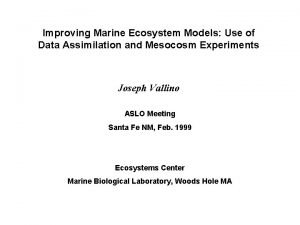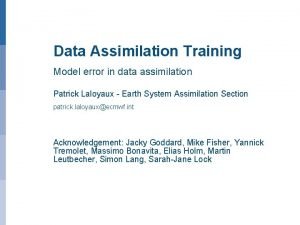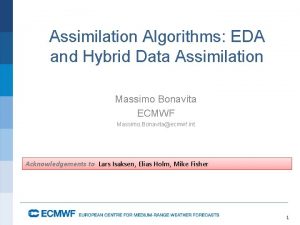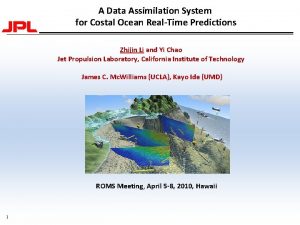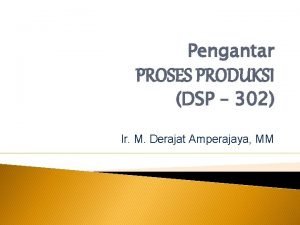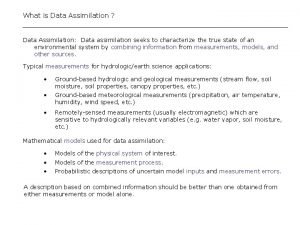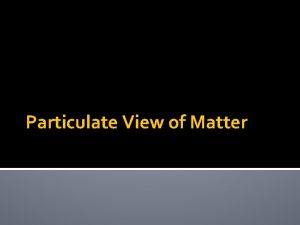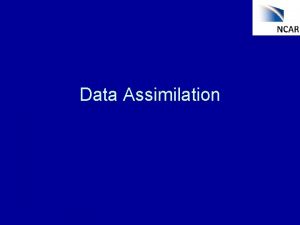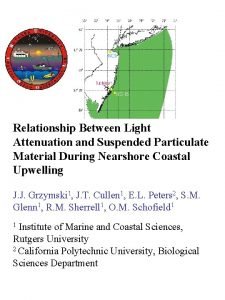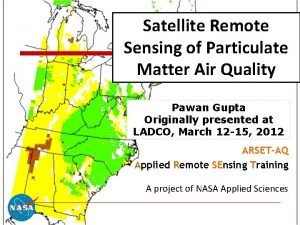Satellite Data Assimilation into a Suspended Particulate Matter












- Slides: 12

Satellite Data Assimilation into a Suspended Particulate Matter Transport Model

Model area & seabed fine sediment distribution: % fine sediment grain size 20 -60μm 2

SPM dynamics modelling concept: OCEAN: Sea surface height Water temperature Salinity RIVERS: Wave Model WAM significant waves height waves direction waves period Topography Fresh water discharge SPM Concentration Circulation SPM transport model ATMOSPHERE: Cloudiness Relative humidity Solar radiation Evaporation Precipitation Air temperature Air pressure Wind Water temperature Salinity (based on HAMSOM) + Satellite data assimilation SPM concentration Seabed sedimentation field model initial data boundary conditions model output SPM 3 D-Concentration field 3

Processes included in the model: Water column Transport with ocean currents Water column Seabed Mixing due to waves and currents Sedimentation Sinking Resuspension Seabed Bioturbation Erosion Sedimentation Mixing Currents Transport Sinking Resuspension Bioturbation Erosion 21 Water layers 21 Seabed layers 5 -10 m 0. 5 -1. 0 mm 4

MERIS data processing: MERIS RGB view Modeled max of SPM 5

Spatial coverage of the southern North Sea by MERIS: Spatial coverage of the southern North Sea by MERIS data in the year 2003 calculated in % of the modelling domain area. 6

MERIS data assimilation (Optimum Interpolation, OI) Profile and mass correction Data processor and quality control New analyzed surface SPM concentration OI into the upper model layer First guess field (model) Mass balance Seabed 7

Effect of data assimilation 1: Surface SPM concentration, mg/l MERIS Model with assimilation Model before assimilation Model without assimilation 8

Effect of data assimilation 2: Observations, mg/l Model with assimilation, mg/l Model without assimilation, mg/l range mean range 0. 41 – 9. 56 3. 00 1. 67 – 24. 99 5. 10 0. 07 – 47. 23 mean 5. 40 9

Modeled seasonal mean surface SPM concentration: 15 April-15 October 2003 15 October – 15 April 2003 calm storm Without assimilation mg/l MERIS data assimilation (Optimum Interpolation) 10

Summary: § Quality control, based on the model results and flags information calculated by the MERIS Case-2 Regional processor filters out unrealistic values in the MERIS SPM surface concentration. § About 300 MERIS scenes were assimilated into the SPM model throughout the year 2003. § The data assimilation signal remains in the model for a couple of days after the assimilation event. § The seasonal distribution patterns of SPM changed considerably due to assimilation. § The data assimilation improves the horizontal SPM distribution, especially its fine structures, i. e. in the location of SPM front in the German Bight and near English cliffs. 11

thank you for your attention Satellite Data Assimilation into a Suspended Particulate Matter Transport Model 12
